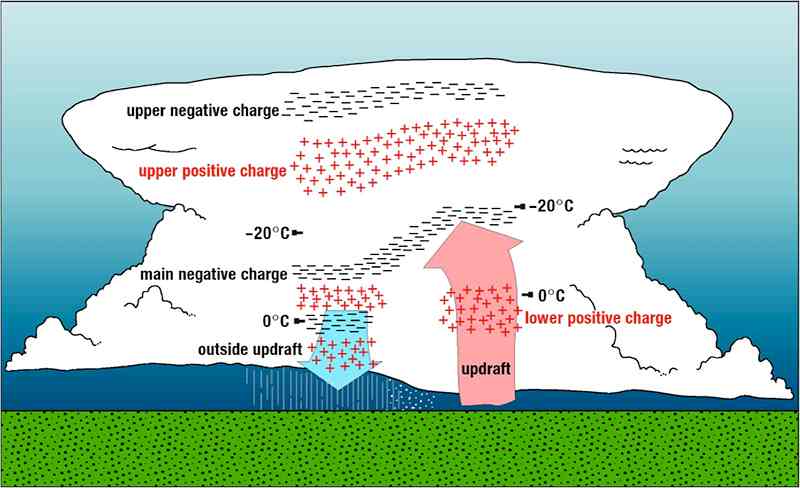Lightning Basics
What is lightning?
Lightning is a giant spark of electricity in the atmosphere between clouds, the air, or the ground. In the early stages of development, air acts as an insulator between the positive and negative charges in the cloud and between the cloud and the ground. When the opposite charges builds up enough, this insulating capacity of the air breaks down and there is a rapid discharge of electricity that we know as lightning. The flash of lightning temporarily equalizes the charged regions in the atmosphere until the opposite charges build up again.
Lightning can occur between opposite charges within the thunderstorm cloud (intra-cloud lightning) or between opposite charges in the cloud and on the ground (cloud-to-ground lightning).
Lightning is one of the oldest observed natural phenomena on earth. It can be seen in volcanic eruptions, extremely intense forest fires, surface nuclear detonations, heavy snowstorms, in large hurricanes, and obviously, thunderstorms.
What causes thunder?
Lightning causes thunder! Energy from a lightning channel heats the air to around 18,000 degrees Fahrenheit. This causes the air to rapidly expand, creating a sound wave known as thunder. The stepped leader causes the initial tearing sound, and the ground streamer causes the sharp click or crack heard at a very close range, just before the main crash of thunder.
Thunder can be heard up to 25 miles away from the lightning discharge. At these distances, thunder sounds like a low rumble because the higher frequency pitches are more easily absorbed by the surrounding environment, and the sound waves set off by the lightning discharge have different arrival times.
Where does lightning strike?
Tall objects such as trees and skyscrapers are commonly struck by lightning. Mountains also make good targets. The reason for this is their tops are closer to the base of the storm cloud. Remember, the atmosphere is a good electrical insulator. The less insulation the lightning has to burn through, the easier it is for it to strike. However, this does not always mean tall objects will be struck. It all depends on where the charges accumulate. Lightning can strike the ground in an open field even if the tree line is close by.
What causes lightning?
The creation of lightning is a complicated process. We generally know what conditions are needed to produce lightning, but there is still debate about exactly how a cloud builds up electrical charges, and how lightning forms. Precipitation and convection theories both attempt to explain the electrical structure within clouds.
Precipitation theorists suppose that different sized raindrops, hail, and graupel get their positive or negative charge as they collide, with the heavier particles carrying negative charge to the lower part of the cloud.
Convection theorists believe that updrafts transport positive charges found near the ground upward through the cloud while downdrafts carry negative charges downward.
You can read more about lightning at the National Weather Service’s JetStream Online School for Weather.
How is electrical charge distributed through a thunderstorm?
A conceptual model shows the electrical charge distribution inside deep convection (thunderstorms), developed by NSSL and university scientists. In the main updraft (in and above the red arrow), there are four main charge regions. In the convective region but outside the outdraft (in and above the blue arrow), there are more than four charge regions.
